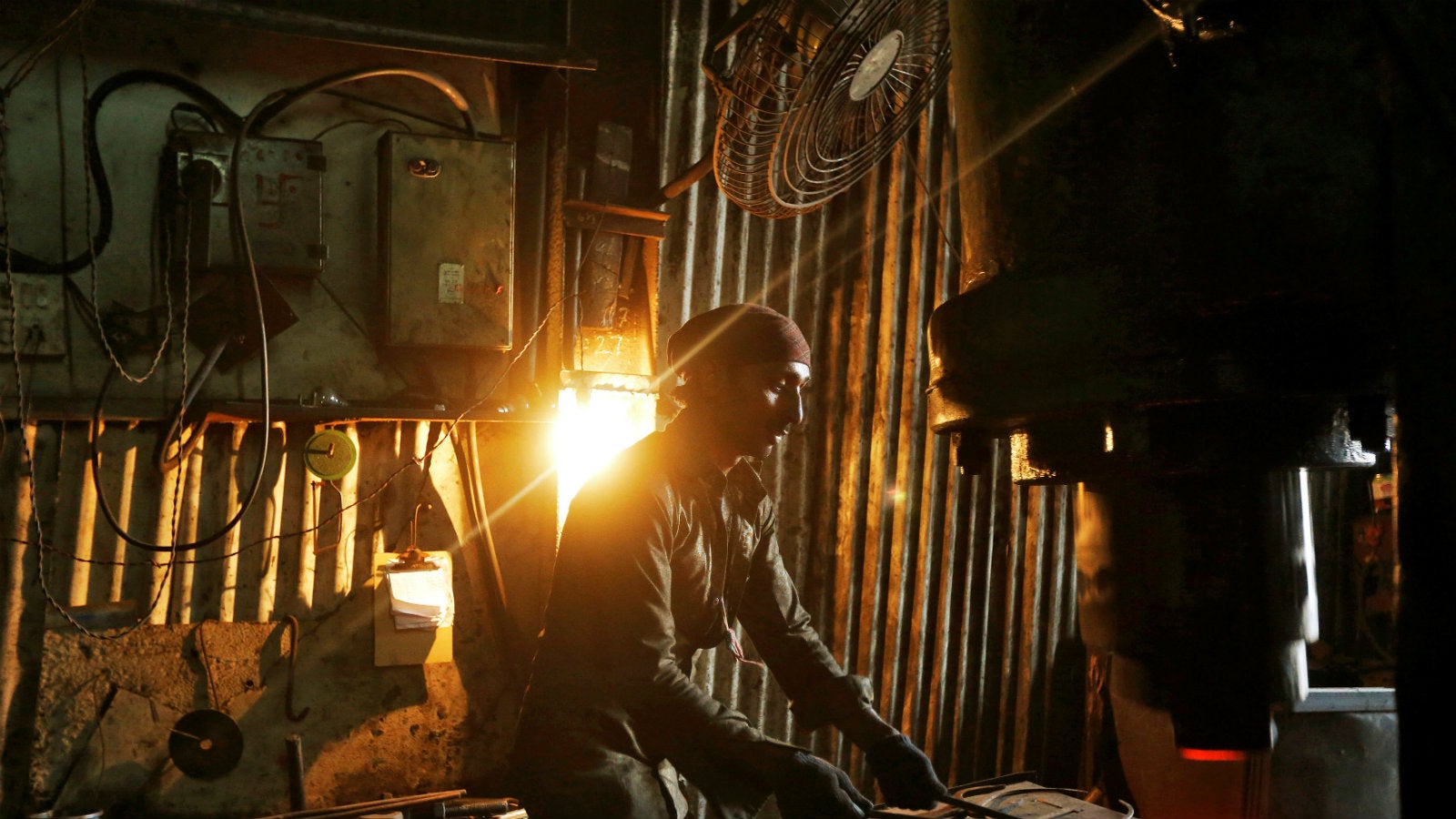This one chart from India shows why no country should try demonetisation
The Indian economy is unable to shrug off the after-effects of the Narendra Modi government’s disruptive move to demonetise two key currency notes.


The Indian economy is unable to shrug off the after-effects of the Narendra Modi government’s disruptive move to demonetise two key currency notes.
In the April-June quarter of financial year 2018 (Q1FY18), India’s GDP grew at 5.7%—the slowest in the past three years.
India lost its title as the world’s fastest-growing major economy in the January-March quarter, when GDP growth declined to 6.1%.
In November 2016, in a surprise move, prime minister Modi declared two high-value notes—Rs500 and Rs 1,000—illegal tenders. This led to a severe cash crunch, particularly for small and medium-sized enterprises, which suffered significantly. Ten months later, the jury is still out on whether demonetisation was successful in fulfilling many of its stated goals, the most important of which was curbing black money or cash unaccounted for. However, a recent report by India’s central bank doesn’t paint a very promising picture.
Within months of demonetisation, the government introduced the goods and service tax (GST), a uniform system to replace the country’s layered taxation structure. It kicked in on July 01. In the run up to its introduction, businesses, particularly smaller ones, had found themselves struggling to adapt to this overhauling. That seems to have taken a toll on the country’s economic growth.
It’s possible that the GDP numbers are even bleaker than reported—the current data doesn’t capture the informal sector, which accounts for about half of the country’s output.
Here is a look at how India’s economy is gradually losing its charm: